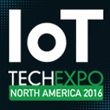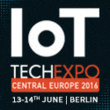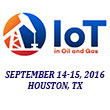

Many businesses are reaping the rewards of the connectivity that IoT provides, while many more are rapidly developing their plans to join this revolution, writes Mark Warren, the product marketing director of Perforce Software. As they do so, they are starting to appreciate the practical challenges that IoT brings: Getting products to market quickly, changing standards – or no standards, rapidly improving hardware, addressing security issues and, especially, coping with the vast amounts of data being generated. All of these challenges are putting a strain on traditional software product development and deployment processes. (more…)
April 5, 2016
Posted by: George Malim

What do 50+ companies deploying connected devices believe is key to delivering ambitious IoT growth expectations?
April 4, 2016
Posted by: IoT global network

In the first part of this series, Bhoopathi Rapolu, the head of analytics for EMEA at Cyient, discussed how the increasing connectivity of medical devices – or the Internet of Things (IoT) – is leading to an explosion in healthcare big data. In turn, this growing bank of data is opening up new avenues for healthcare operations, which has the potential to totally transform the way we look at healthcare. In this second and final part of the series, he explores further ways in which healthcare organisations can look to take full advantage of the IoT. (more…)
March 29, 2016
Posted by: George Malim

It probably won’t have escaped your attention that the Internet of Things (IoT) has emerged as something of a phenomenon in the last few years, writes Bhoopathi Rapolu, the head of Analytics for EMEA at Cyient. The concept has become so popular that its impact is being felt across a huge number of industries, and healthcare is no exception. (more…)
March 23, 2016
Posted by: George Malim

Event date: October 20-21, 2016
Conference & Exhibition in Santa Clara, CA
Europe’s leading IoT conference will be arriving in San Francisco, North America , on 20-21st October for two days of top level content and discussion, introducing and exploring the latest innovations in the Internet of Things arena. (more…)
March 21, 2016
Posted by: IoT global network

Event date: June 13-14, 2016
Conference & Exhibition lands in Berlin
IoT Tech Expo Central Europe Conference & Exhibition lands in Berlin, 13-14 June (more…)
Posted by: IoT global network

Event date: September 14-15, 2016
Houston,TX
After capturing the attention of both the energy and technology markets with its inaugural IoT in Oil and Gas event in 2015, the 2nd annual IoT in Oil and Gas will build on the success of the first event by exploring the evolution of IoT technology – with more case studies, practical thought leadership sessions and insights. (more…)
March 15, 2016
Posted by: IoT global network

Event date: 12-13 April, 2016
ExCeL Centre, London, UK
The Internet of Things is radically redefining just what it means to be connected. It will present unmissable, undreamt-of possibilities for businesses all over the world. But it will need explaining. (more…)
March 14, 2016
Posted by: IoT global network

KORE’s announcement today of its acquisition of Wyless has been a while in the making, but hugely significant now it is here, writes Robin Duke-Woolley, the chief executive of Beecham Research. (more…)
March 9, 2016
Posted by: George Malim

Mobile World Congress 2016 did meet expectations: a relentless show with people walking endlessly between halls for meetings, seeking opportunities, and listening to the latest announcements from the industry, write Robin Duke-Woolley, the chief executive of Beecham Research, and Saverio Romeo the firm’s principal analyst. Over 100,000 visitors this year – the most ever – and the food at the show was even more atrocious than last year. How do they get away with it at such high prices? (more…)
March 8, 2016
Posted by: George Malim